| HOSTED BY |
A History of Art Forgery
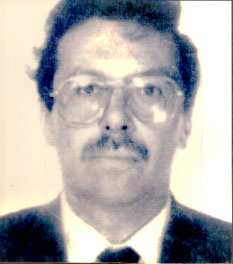 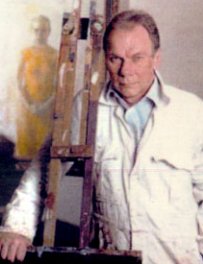 JOHN DREWE & JOHN MYATT |
| Glen
Lowery, then director of the Museum of Modern Art in New
York City described the forgery scheme of John Myatt and John
Drewe, who passed off millions of dollars in fake post- impressionist
art prior to their arrest in 1995 as “one of the most extensive
frauds in the visual arts.” The team admitted to having forged
over 200 “masterworks” of modern art.
The mastermind behind Britain’s most recent case of art forgery is John Drewe (b. 1948). Over a period of about 10 years, from the mid-1980s to the mid-1990s., Drewe arranged phony documentation for paintings by a number of world famous artists, including Marc Chagall, Alberto Giacometti, Ben Nicholson and others. In reality these works had been painted by Drewe’s accomplice, John Myatt (b. 1945), who eventually testified against Drewe. In February 1999 Drewe was sentenced to 6 years in jail; Myatt was sentenced to 1 year. Investigators say they have recovered 60 of the fakes, but another 140 remain at large. Their activities hardly passed notice by the media. They received major coverage in the New York Times, in an article by Peter Landesman from which these images are extracted. As recently as October 2000, Variety reported that MGM had optioned Landesman's story to be the basis for a movie based on the scheme, starring Michael Douglas. This is not the only case in the history of art fraud where the perpetrators became cult heroes of sorts. |
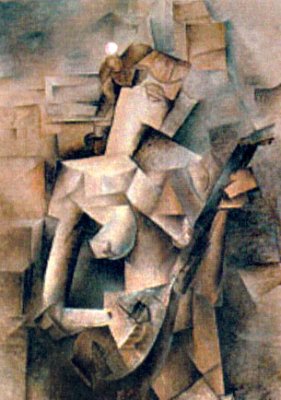 |
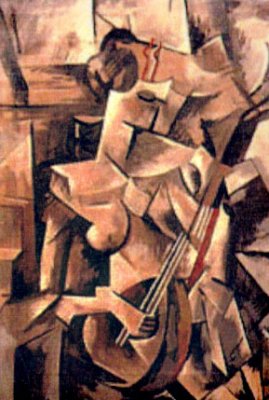 |
|
ABOVE LEFT: A genuine 1910 Picasso entitled Girl With A
Mandolin. |
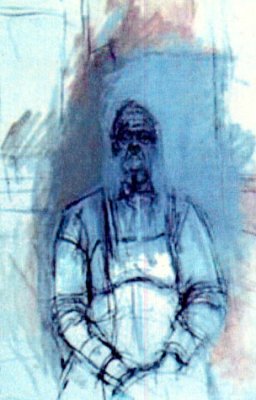 |
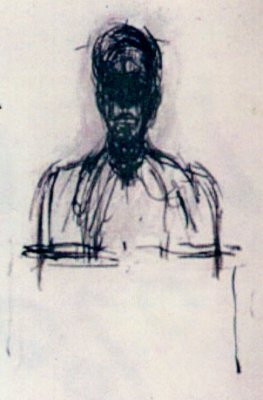 |
|
ABOVE LEFT: Real Giacometti: Nimatallah/Art Resource, NY. |
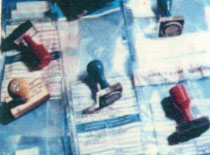 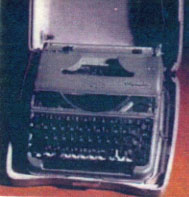  |
| Tools of the Trade: Seized in a police raid in 1995, instruments and implements used by the forgery team of Myatt and Drewe included (l. to r.) rubber stamps forged to imprint impressive seals of authority on works of art; an old manual typewriter to fake documents of provenance that were then inserted into museum and other institution files; and forged sales catalogs of auction houses and prestigious arts establishments where spurious works of art had supposedly been sold or owned as original works by the Masters. |
| Intro (1) (2) (3) (4) (5) (6) (7) (8) (9) (10) (11) (12) (13) (14) (15) (16) (17) (18) (19) (20) Look for updates to this exhibit every week. Also visit the companion to this exhibit: FABULOUS FAKES |
| Special thanks to people without whom this exhibition would not have been possible: Thea Eichler, NRCA; Billie Tucker, New Rochelle Library; Ivar Hyden, Backstreet Gallery and all the contributing artists. |
| Additional information about the availability of Fabulous Fakes, the History of Art Forgery or any of the works in the exhibition may be obtained by contacting The New Rochelle Council on The Arts by email or by calling 212-529-2025. More information on the NRCA can be found by connecting to the internet and clicking here. |
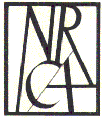 Fabulous Fakes and A History of Art Forgery © J. L. Dolice, 2001, 2003.
|
| All images in this presentation may not be copied, stored in any electronic retrieval device or used in any way without permission in writing. ISBN 0-935901-51-5. |
| Art Forgery | Art Haus |